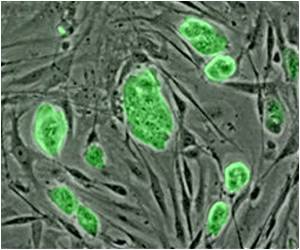A key factor responsible for declining muscle repair during ageing has been discovered by scientists.

The researchers carried out a study on old mice and found the number of dormant stem cells present in the pool reduces with age, which could explain the decline in the muscle's ability to repair and regenerate as it gets older. When these old muscles were screened the team found high levels of FGF2, a protein that has the ability to stimulate cells to divide. While encouraging stem cells to divide and repair muscle is a normal and crucial process, they found that FGF2 could also awaken the dormant pool of stem cells even when they were not needed. The continued activation of dormant stem cells meant the pool was depleted over time, so when the muscle really needed stem cells to repair itself the muscle was unable to respond properly.
Following this finding, the researchers attempted to inhibit FGF2 in old muscles to prevent the stem cell pool from being kick-started into action unnecessarily. By administering a common FGF2 inhibitor drug they were able to inhibit the decline in the number of muscle stem cells in the mice.
Dr Albert Basson, Senior Lecturer at the King's College London Dental Institute, said: 'Preventing or reversing muscle wasting in old age in humans is still a way off, but this study has for the first time revealed a process which could be responsible for age-related muscle wasting, which is extremely exciting.
'The finding opens up the possibility that one day we could develop treatments to make old muscles young again. If we could do this, we may be able to enable people to live more mobile, independent lives as they age.'
Dr Andrew Brack, senior and corresponding author of the study from Harvard University, said: 'Analogous to the importance of recovery for athletes training for a sporting event, we now know that it is essential for adult stem cells to rest between bouts of expenditure. Preventing stem cell recuperation leads to their eventual demise.'
Advertisement
'The next step is to analyse old muscle in humans to see if the same mechanism could be responsible for stem cell depletion in human muscle fibres, leading to loss of mass and wastage.'
Advertisement










